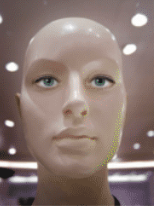COULD JAPAN’S ROBOT TEACHER EVER REPLACE HUMANS?
In early 2009, scientists developed a robot teacher. Saya, the robot teacher, can take attendance by calling out each student’s name. She can smile, scold and even say things like “Be quiet!” when necessary. Unlike other robots, Saya can express six basic emotions — surprise, fear, disgust, anger, happiness, sadness. Motors and wiring around Saya’s eyes and her mouth allow her to show emotions. How does she show surprise? Her mouth pops open and her eyes widen. Then her eyebrows are raised. How does she show happiness? Her lips pull back to mak e a smile. In addition, Saya’s lips move when she talks. But that is all Saya could do because she is not a real teacher. Saya is a robot. She is controlled by a person who is using cameras to watch the class. In Japan, scientists are working on robots like Saya. Many of the nation’s workers are getting older. In the future, Japan may not have enough workers. They are thinking of using robots when older people quit working. People already use robots for many different jobs. But what about jobs like teaching or nursing? People who do these jobs must be able to talk with people. Noel Sharkey, robotics expert and professor at the University of Sheffield, does not believe that robots can take the place of humans in these jobs. Sharkey uses teaching as an example. He says a robot can give information to a student. But that’s all. Robots can be programmed to express emotion. However, robots don’t actually feel anything. Therefore, they don’t understand people. “It would be a mistake to think that such robots could replace a human teacher,” Sharkey said. “Almost every successful person has that one teacher who inspired them. A robot cannot be that kind of role model.” Ronald C. Arkin, professor in the Georgia Institute of Technology, agrees with Sharkey. He says that scientists need to study more on robots. They believe that in the future robots might care for children or older people. Arkin believes that people who are ill need to be with other humans. This keeps them from feeling alone. Hiroshi Kobayashi, a science professor in Japan, created Saya. Kobayashi agrees with Arkin. He says Saya may be able to do many things, but she will never take the place of humans. “The robot has no intelligence. It has no ability to learn. It has no identity ,” he said. “It is just a tool,” Kobayashi says.

